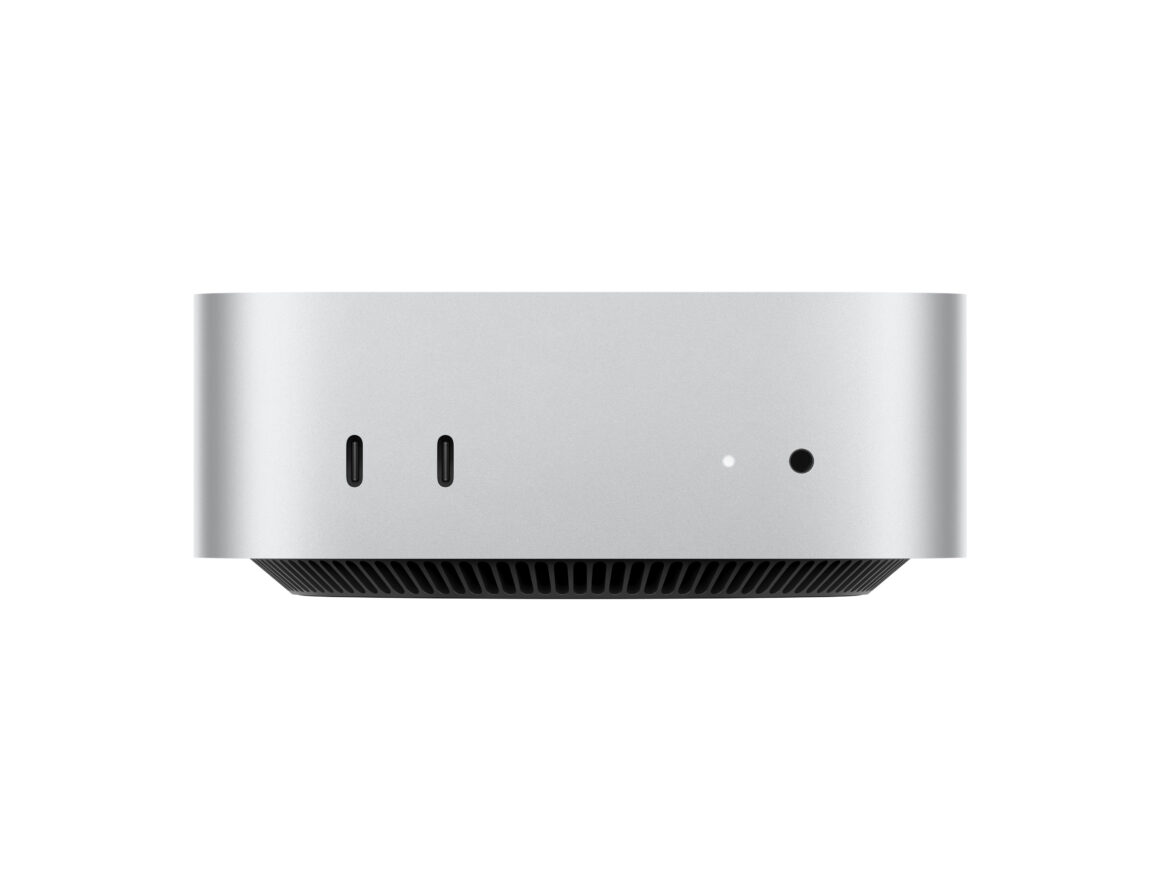Last week saw the debut of the all-new Mac mini, which is the first redesign in over 14 years. Although the previous design remained the same throughout the era, it went through several updates for the port selection to keep up with today’s accessories. But first, let’s go back to the original design of the Mac mini
Original polycarbonate/aluminum design (2005-2010)

Image: Apple
The Mac mini was introduced in January 2005, and it features a super compact design that was 6.5 inches square and 2 inches tall. It featured an aluminum exterior around the perimeter with a polycarbonate (plastic) top. The original Mac mini came with a Power PC G4 processor, and it came with an optical Combo/SuperDrive and a variety of I/O ports: Ethernet (10/100Base-T), optional Modem port, DVI port, 2 USB ports, FireWire 400 port, audio jack, and a security slot. This model came out just months before Apple announced its transition to Intel in June 2005.
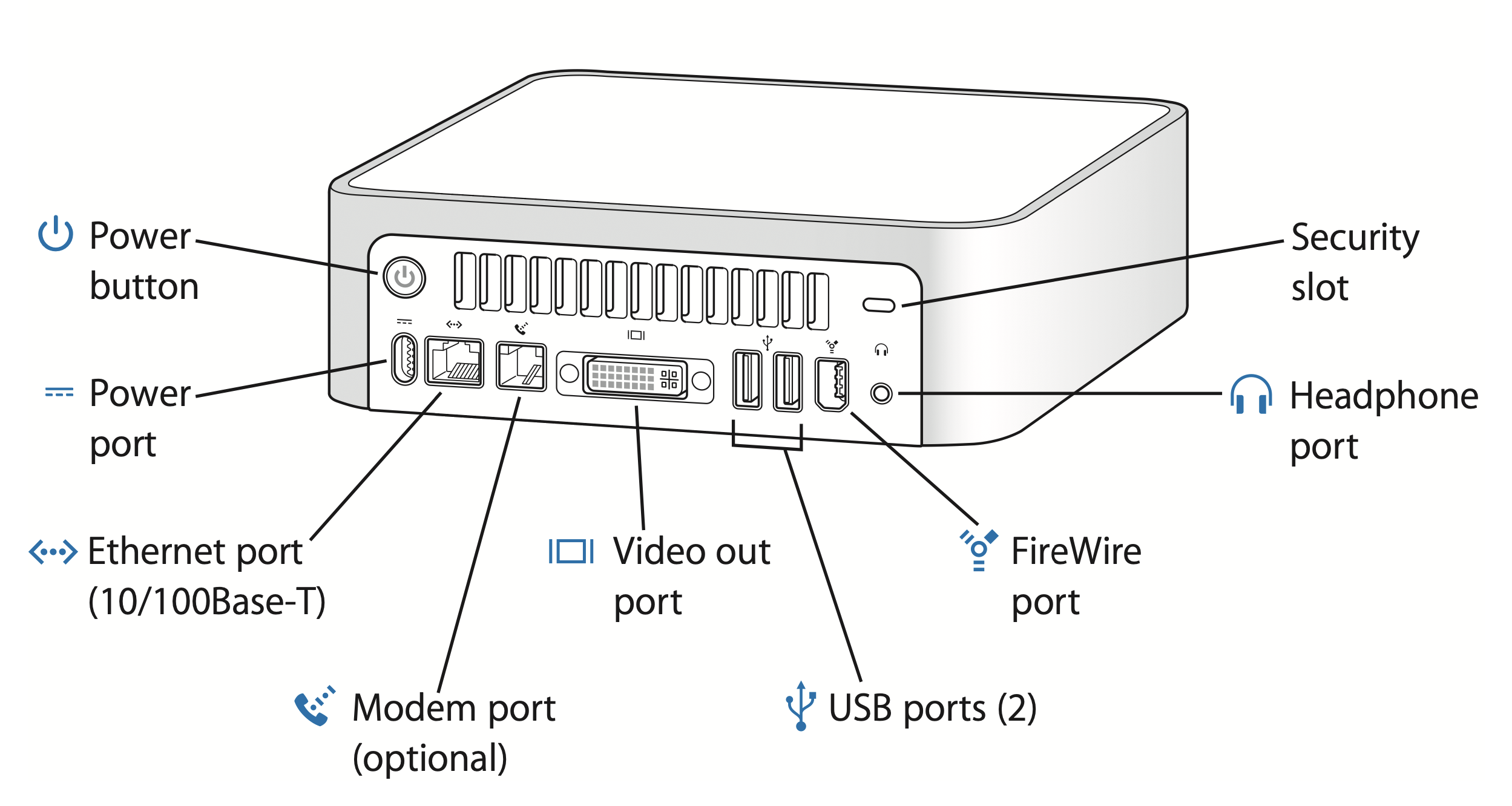
Image: Apple
In February 2006, the Mac mini made the switch to Intel processors, and the I/O was changed up a bit. You got an upgraded Gigabit Ethernet, two more USB ports, and a line-in port. Additionally, you have an infrared sensor at the front for you to use an Apple Remote to open Front Row. The first Intel Mac minis came with both an Intel Core Solo and an Intel Core Duo, but the Solo model didn’t stay on the market too long due to its significantly poor performance for the price back then. In August 2007, the Mac mini was upgraded with the 64-bit Intel Core 2 Duo processors.
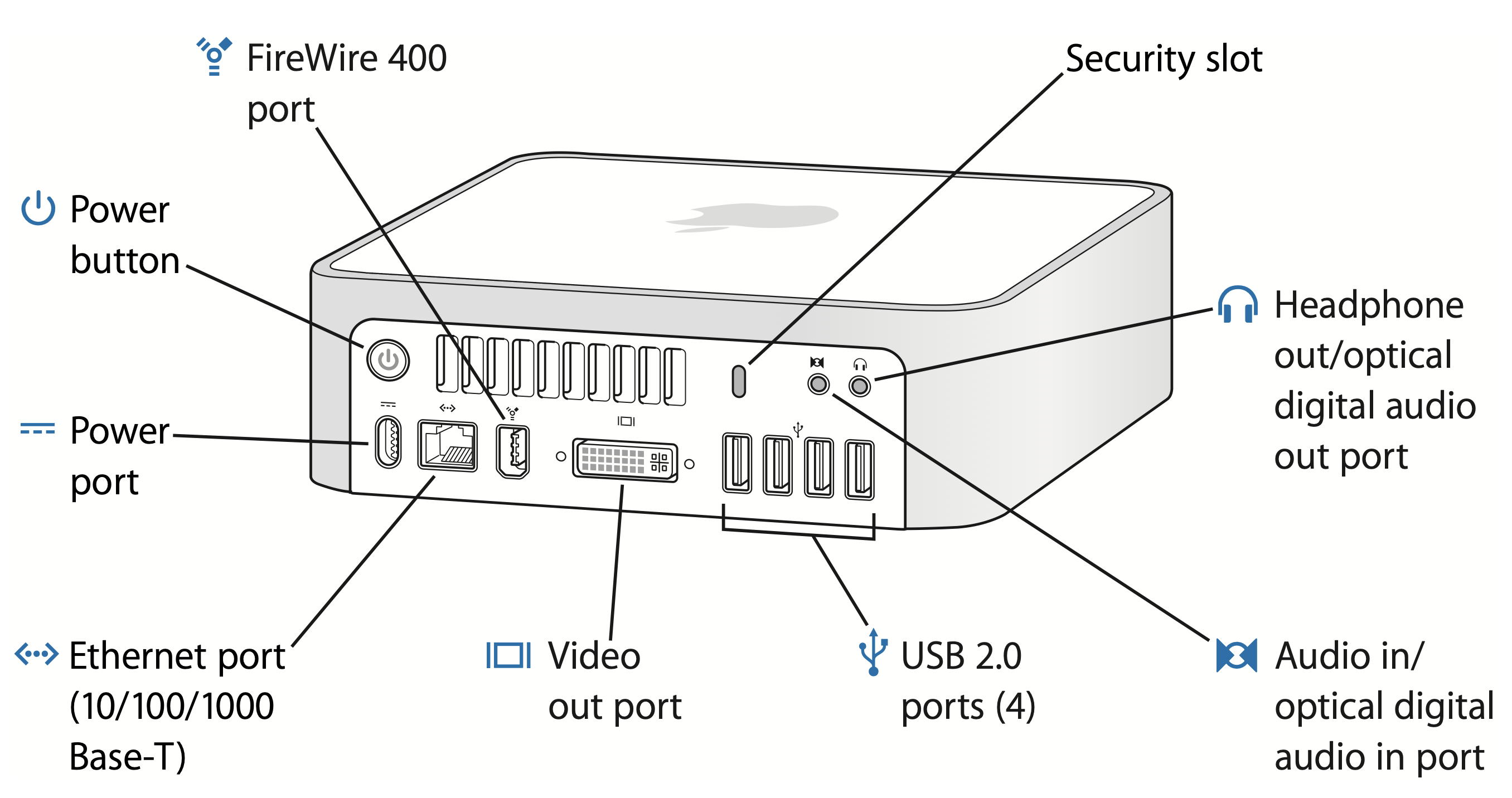
Image: Apple
In March 2009, Apple kept the same design, but changed the I/O again, this time with one more USB port (a total of five) and FireWire 800 port in place of FireWire 400. The full-size DVI port was replaced with both a Mini-DVI port and a Mini DisplayPort, allowing you to connect up to two monitors at once. That Mac mini also switched from Intel’s integrated graphics to Nvidia’s.
Later in October, Apple came out with an additional Server model that ran OS X Server, which omitted the optical drive to make room for a dual hard drive system.
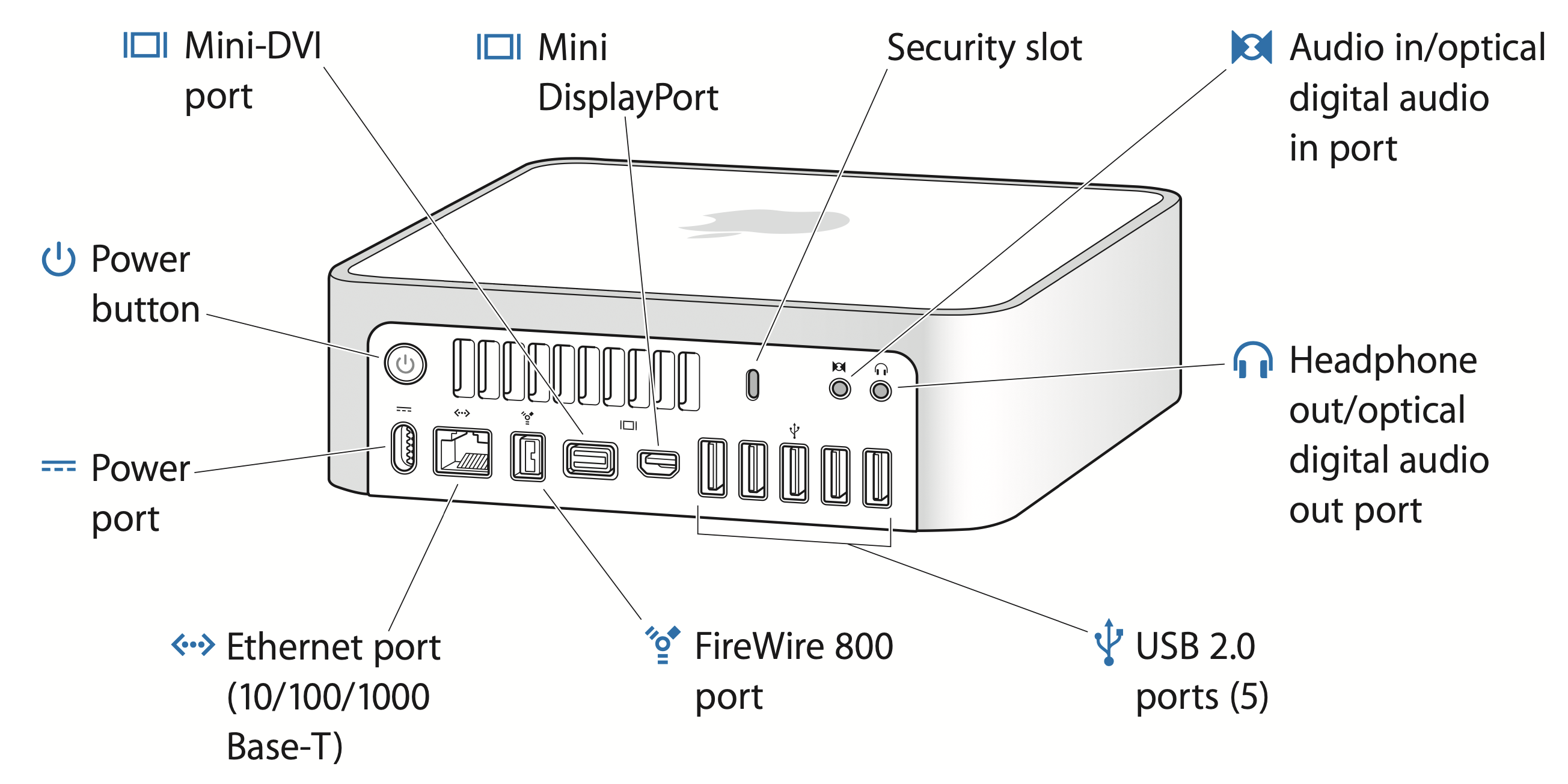
Image: Apple
Unibody aluminum design (2010-2024)
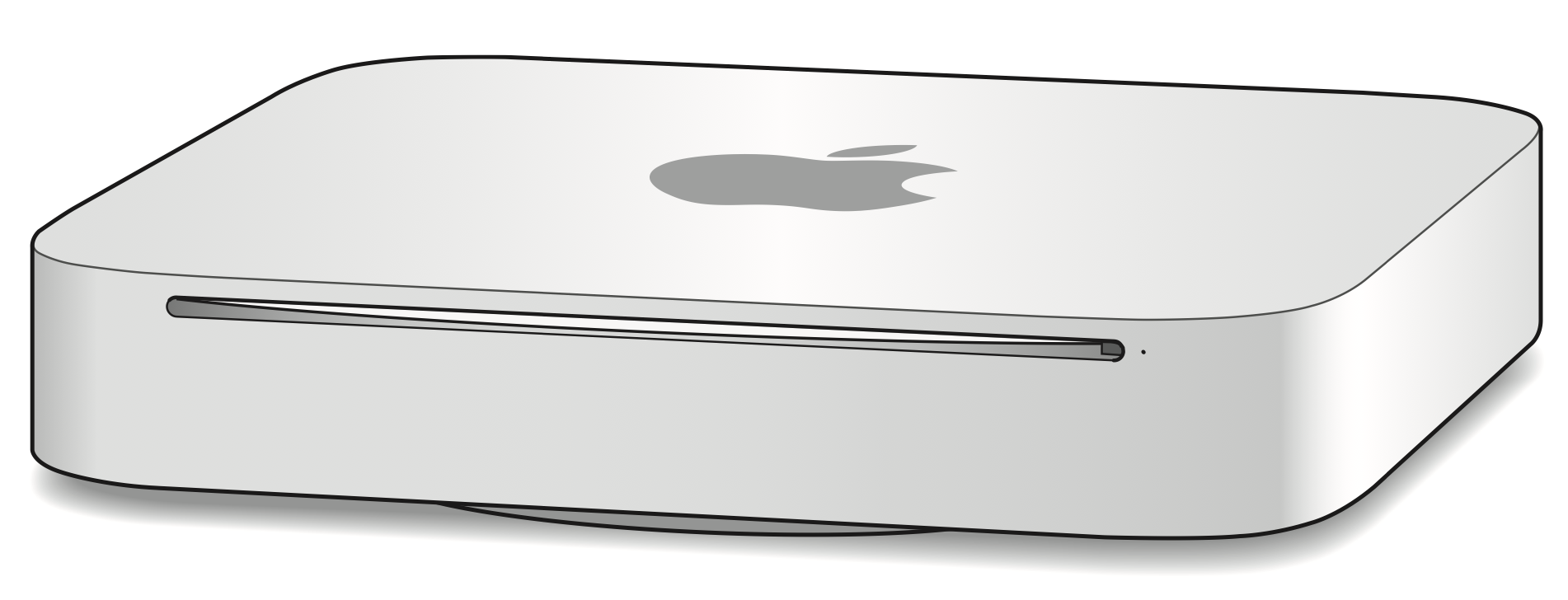
Image: Apple
June 2010 would see the first redesign of the Mac mini since the original model. Following suit of the design cues from the redesigned iMacs and MacBook Pros, the redesigned Mac mini featured an aluminum unibody enclosure. The dimensions were 7.7 inches square and 1.4 inches tall, so it got larger in footprint but thinner in height. Gone was the Mini-DVI port, so in place of that, you got an HDMI port for you to connect to an HDTV. The fact that the SDXC card slot made its way to that model made up the missing USB port (for a total of four).
Starting in July 2011, the Mac mini went to the series of Intel Core “i” chips and also switched back to Intel’s integratedgraphics except the highest-end model came with AMD’s discrete graphics. That was the only Mac mini model that came with a dedicated GPU. At the same time, Apple updated the Mini Display port to Thunderbolt, and it finally ditched the optical drive on the standard Mac mini models. While the standard models had dual-core processors, the server model was the first to get quad-core processors.
In October 2012, Apple made several solid improvements. First, the processors were upgraded to Ivy Bridge processors, the USB ports got upgraded to USB 3.0, and quad-core processors made their way to the higher-end standard model as well. Gone was the dedicated GPU on the highest-end model.
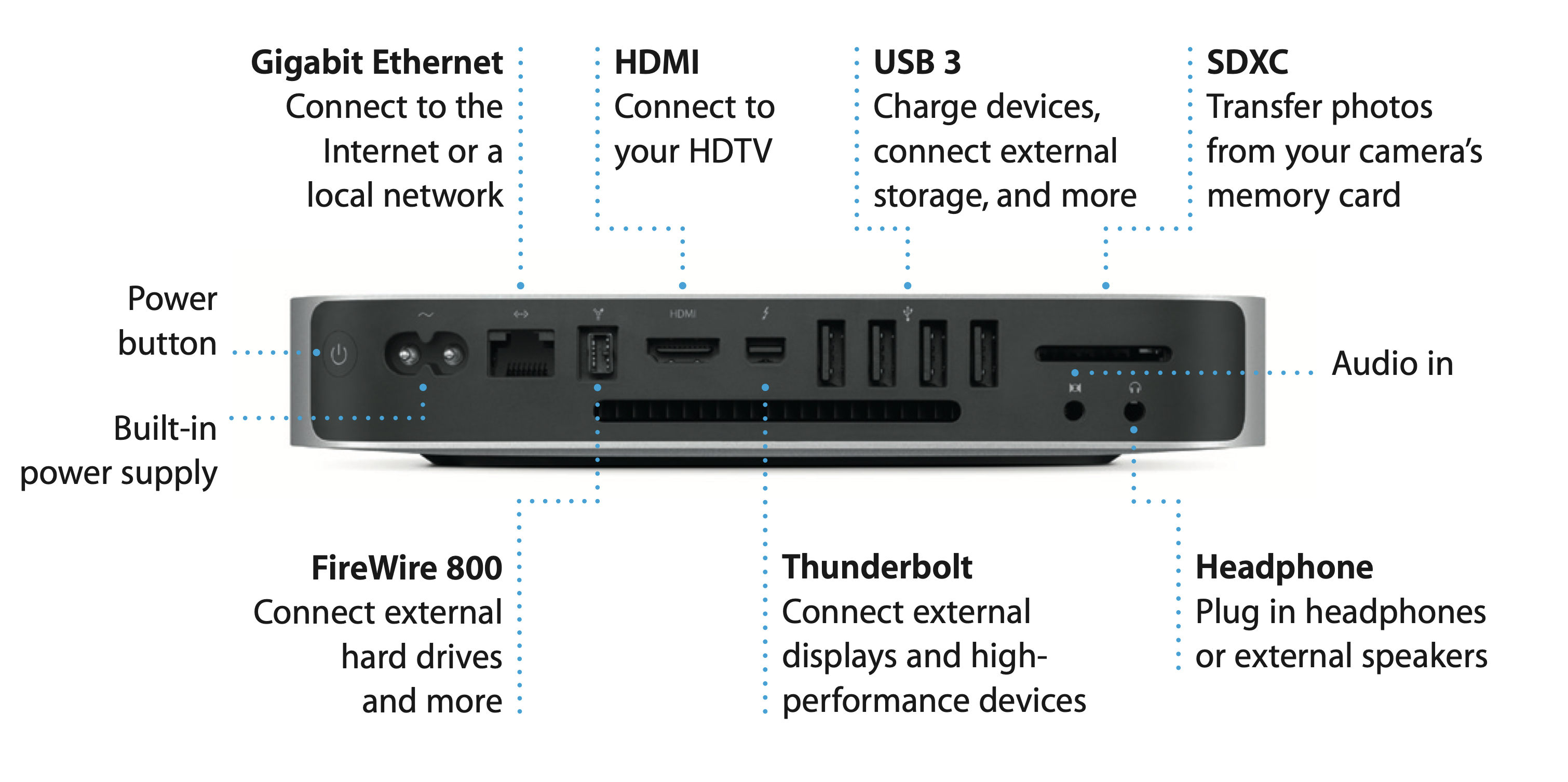
Image: Apple
In October 2014, things started to get insane, not only Apple dropped the server model entirely, but it also ditched the FireWire 800 port in favor of the second Thunderbolt port, and both of the two Thunderbolt ports got upgraded with faster Thunderbolt 2 speeds. However, this hardware revision was considered somewhat of a downgrade as Apple dropped the Mac mini models with quad-core processors, so you could only get a dual-core processor on any configuration.
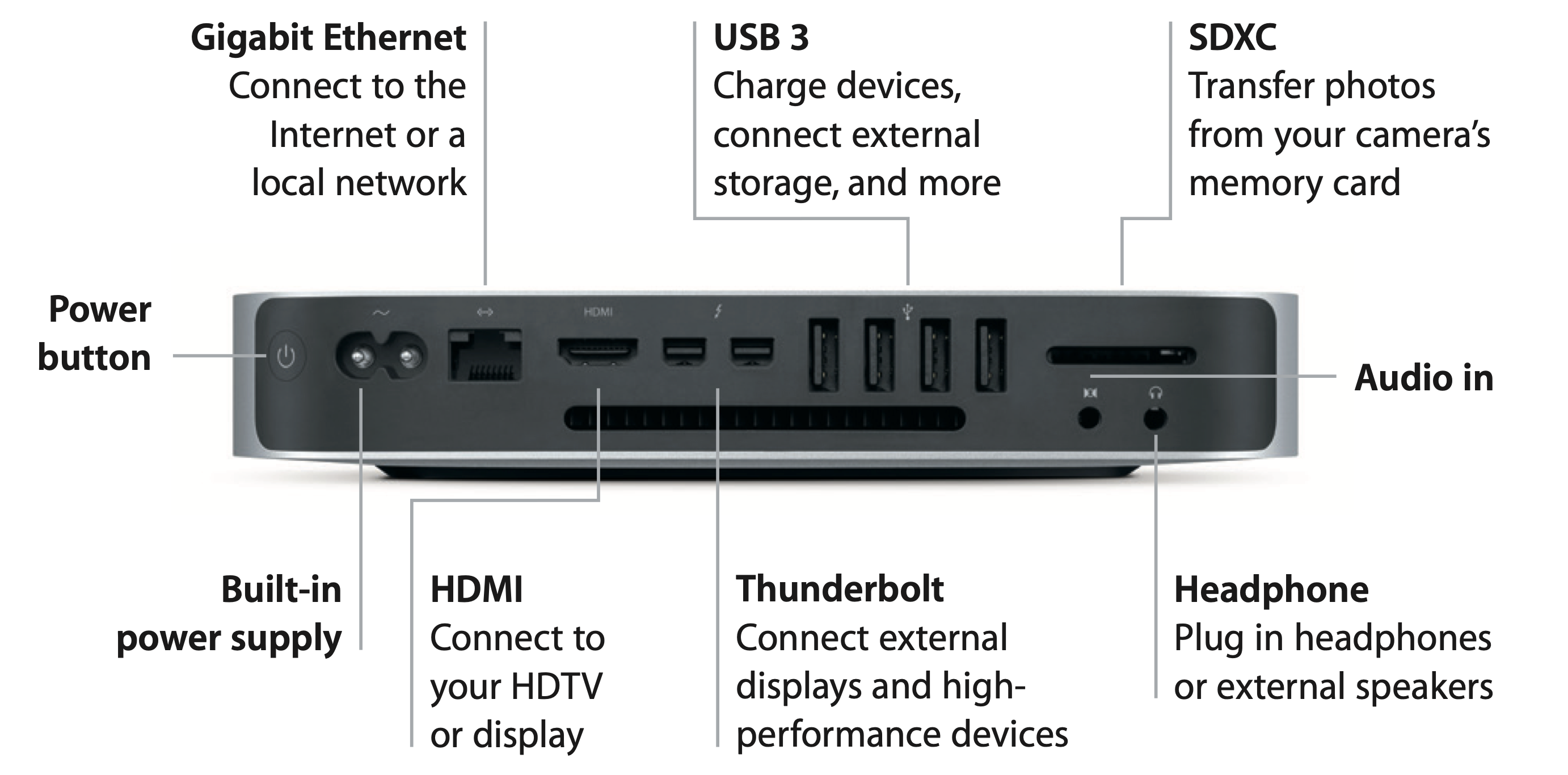
Image: Apple
After four years of no hardware update, it seemed like Apple had forgotten about the Mac mini until October 2018 when Apple finally updated the Mac mini, bringing a new paint job in the process, or rather a darker Space Gray finish to match with the iMac Pro back then. Not only did this Mac mini feature the T2 Security Chip, but its set of ports also changed drastically. You got four Thunderbolt 3 (USB-C) ports, two USB-A (USB 3.0) ports, and an HDMI 2.0 port; however, gone were the SDXC card slot, audio in port, and IR receiver in the front.
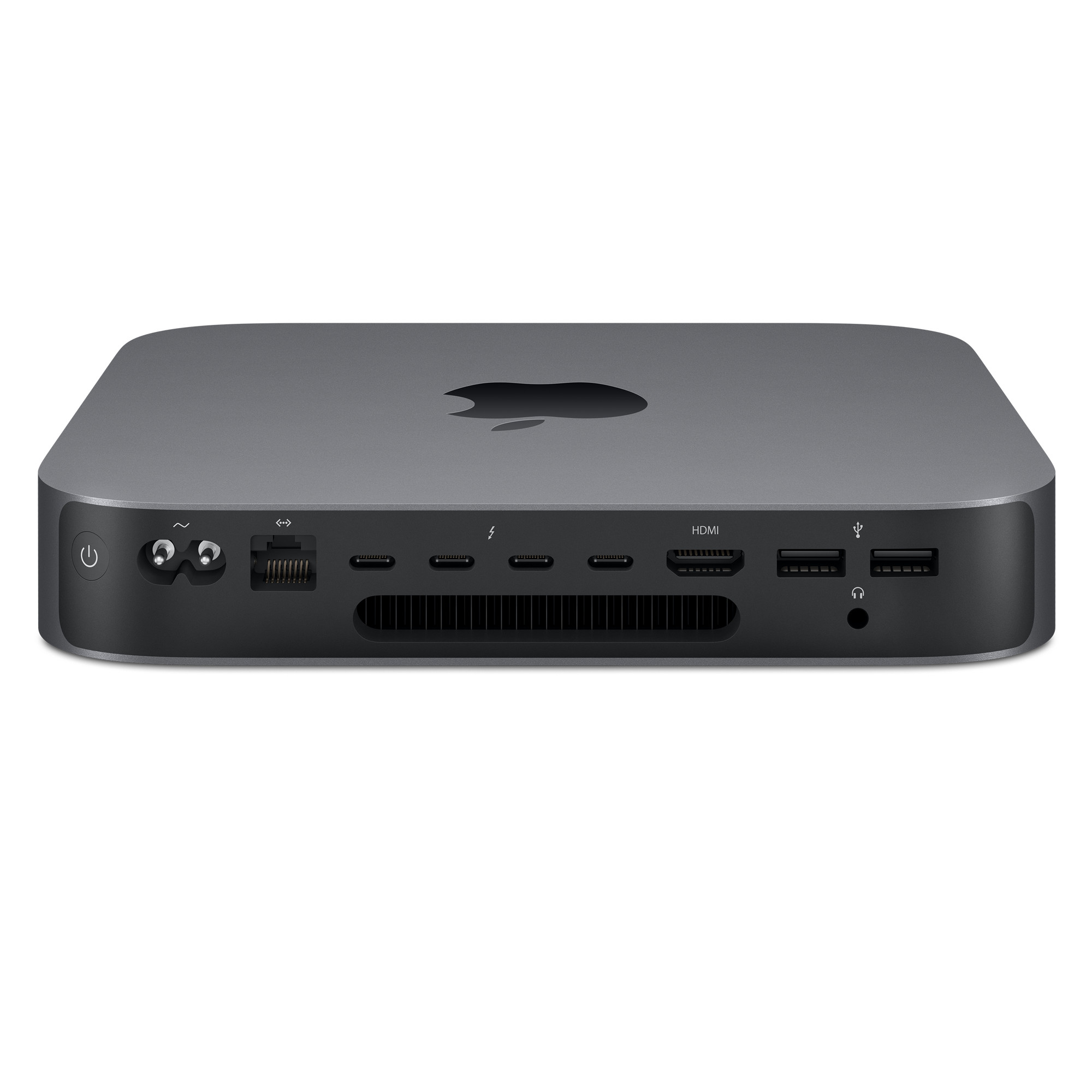
Image: Apple
November 2020 saw the first Macs with Apple Silicon, and one of those was the Mac mini with an M1 chip. It reverted back to the silver finish. Although it dropped two Thunderbolt ports, at least those remaining ports now support USB 4. The M1 Mac mini didn’t immediately replace the Intel-based Mac mini as the highest-end Mac mini with Core i5 standard remained on the market until January 2023.
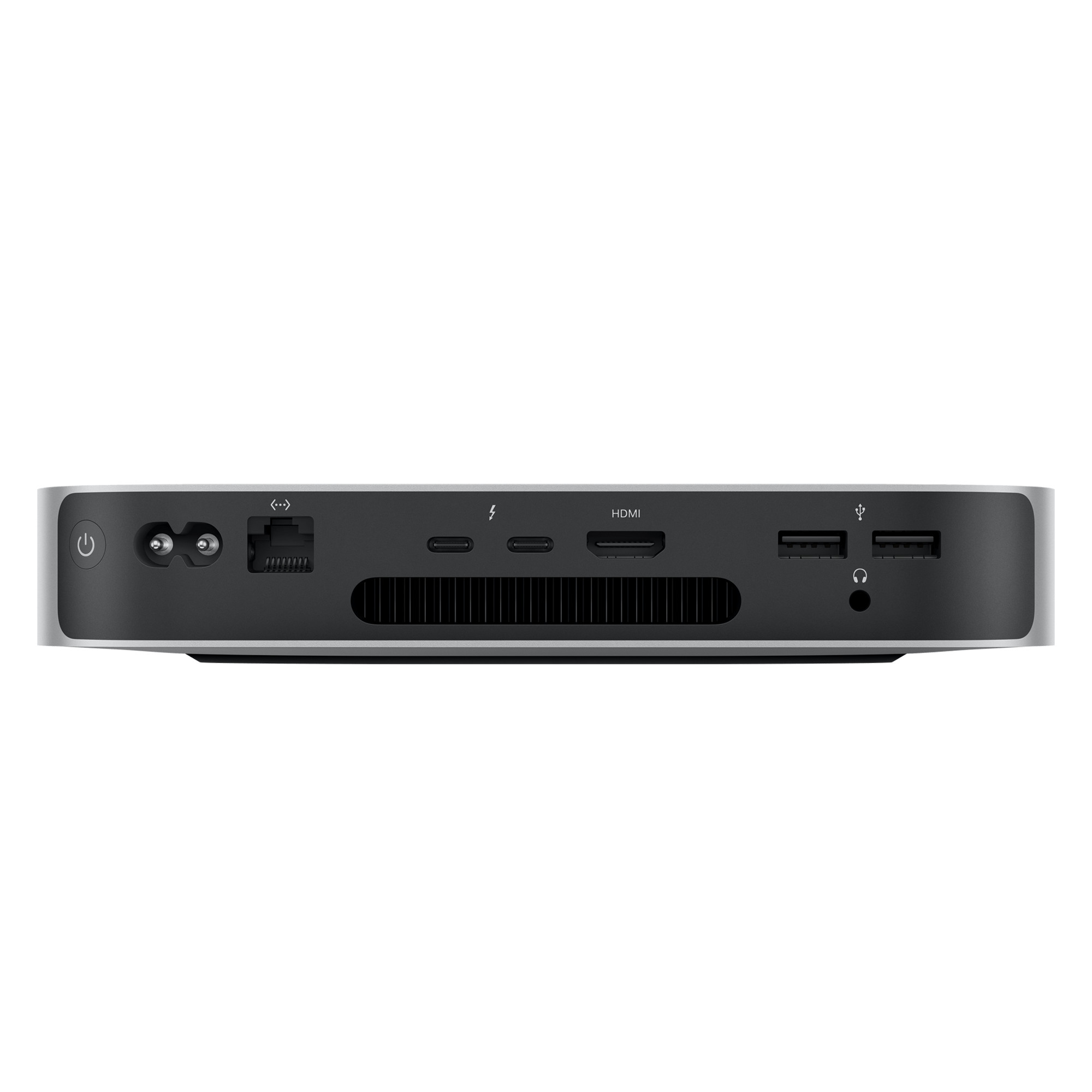
Image: Apple
That was when Apple introduced the Mac mini with M2 and M2 Pro chips. The M2 model had the same set of ports as the previous M1 model, and with the M2 Pro model replacing the highest-end Intel model from 2018 as it had the same set of ports, this marked the end of an era for the Intel-based Mac mini.
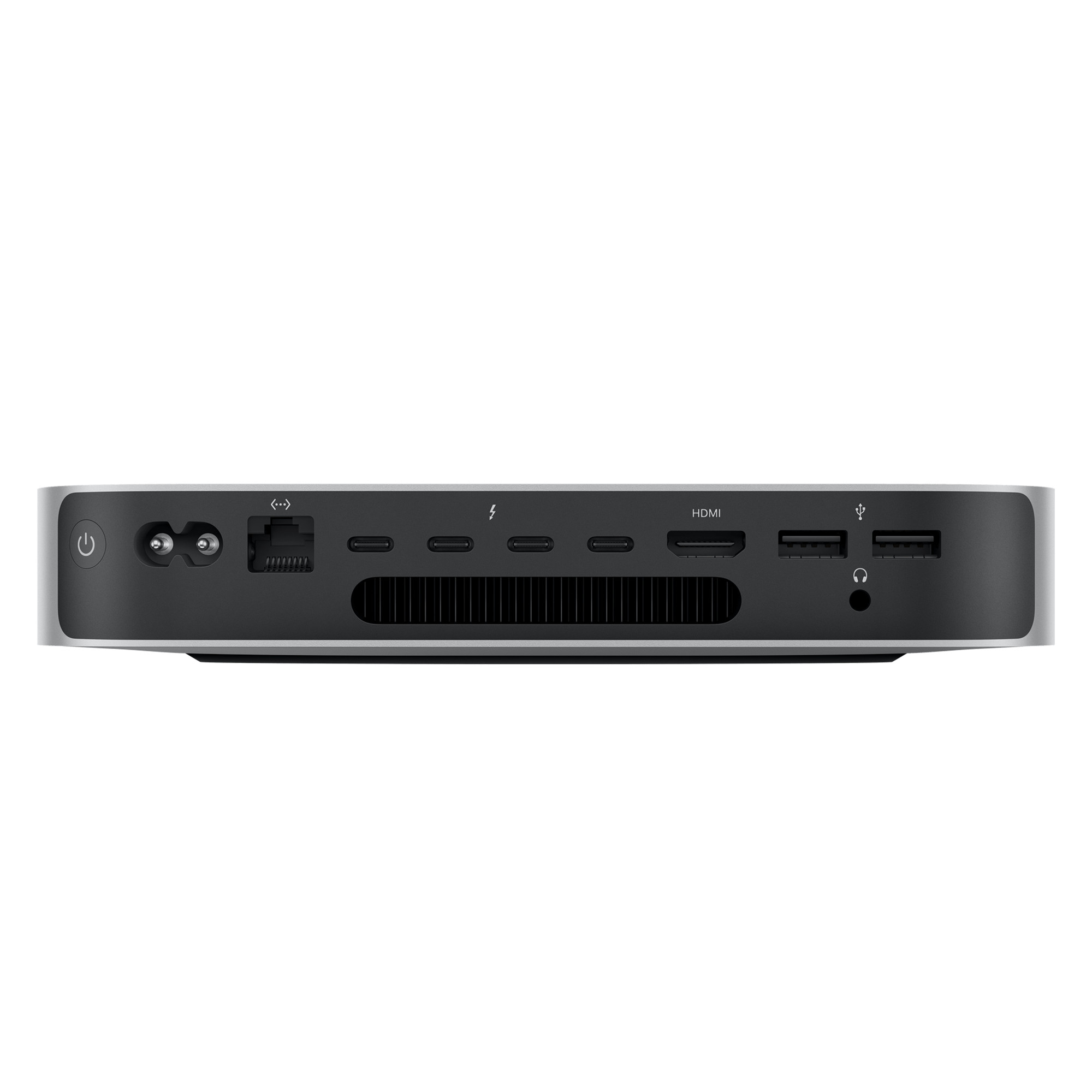
Image: Apple
Smaller, yet mightier design (2024-)
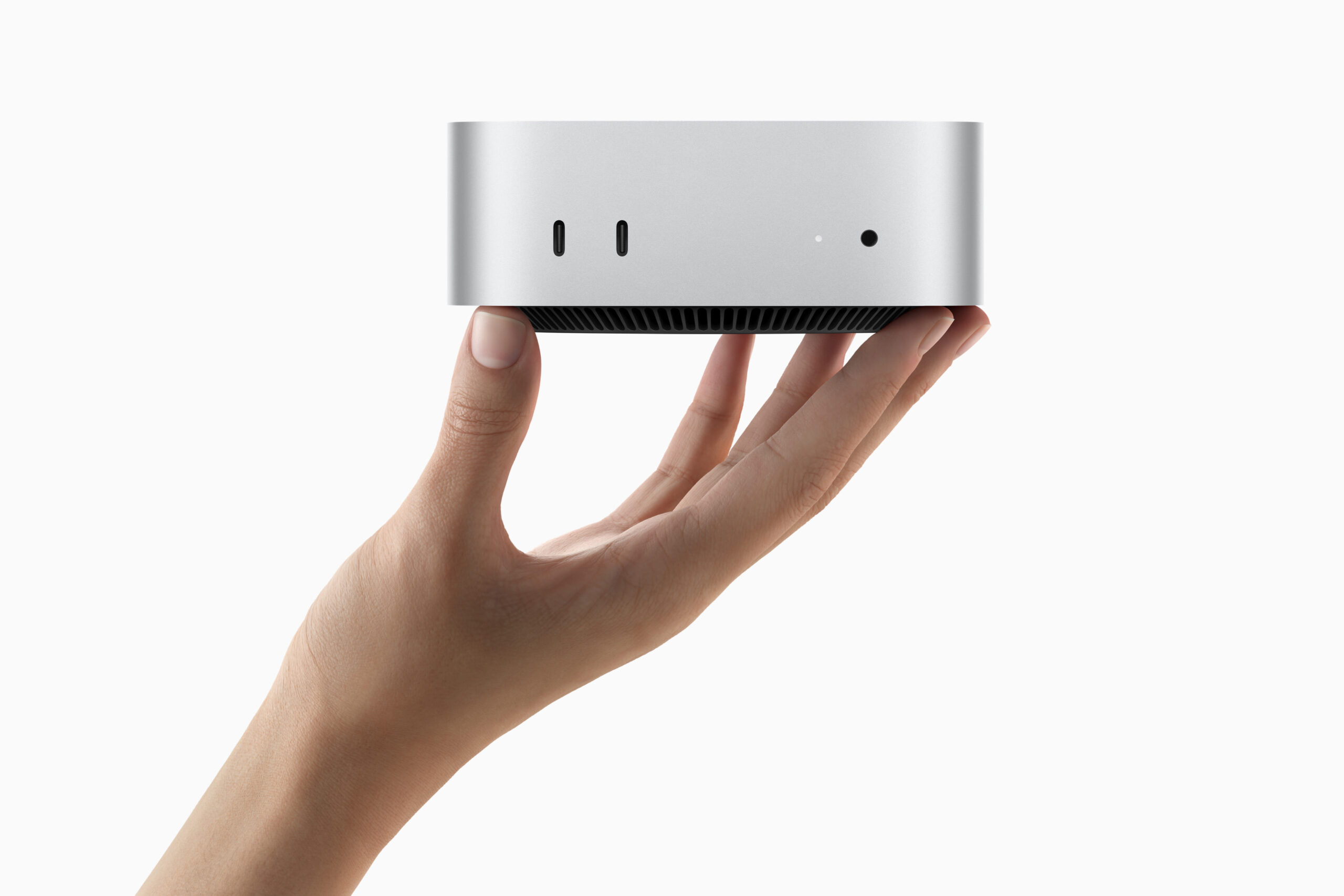
Image: Apple
The Mac mini had the same design for over 14 years, which was the longest design for any Mac model in history. However, with the M1 Mac mini, the miniaturized motherboard left a lot of empty space in that machine. The advancements in efficiency for Apple Silicon gave Apple the opportunity to redesign the Mac mini from the ground up, and last week, Apple debuted an all-new smaller Mac mini that was optimally designed around the M4 and M4 Pro. This new design is a 5-inch square and 2 inches tall, so it’s up to 50% smaller in volume than the previous model. To achieve this smaller design, Apple ditched the USB-A ports in favor of all USB-C ports, so you now get two USB-C ports and a headphone back on the front and Gigabit Ethernet, HDMI, and three Thunderbolt (USB-C) ports. Those Thunderbolt ports get even faster with Thunderbolt 5 speeds when you opt for the M4 Pro model.
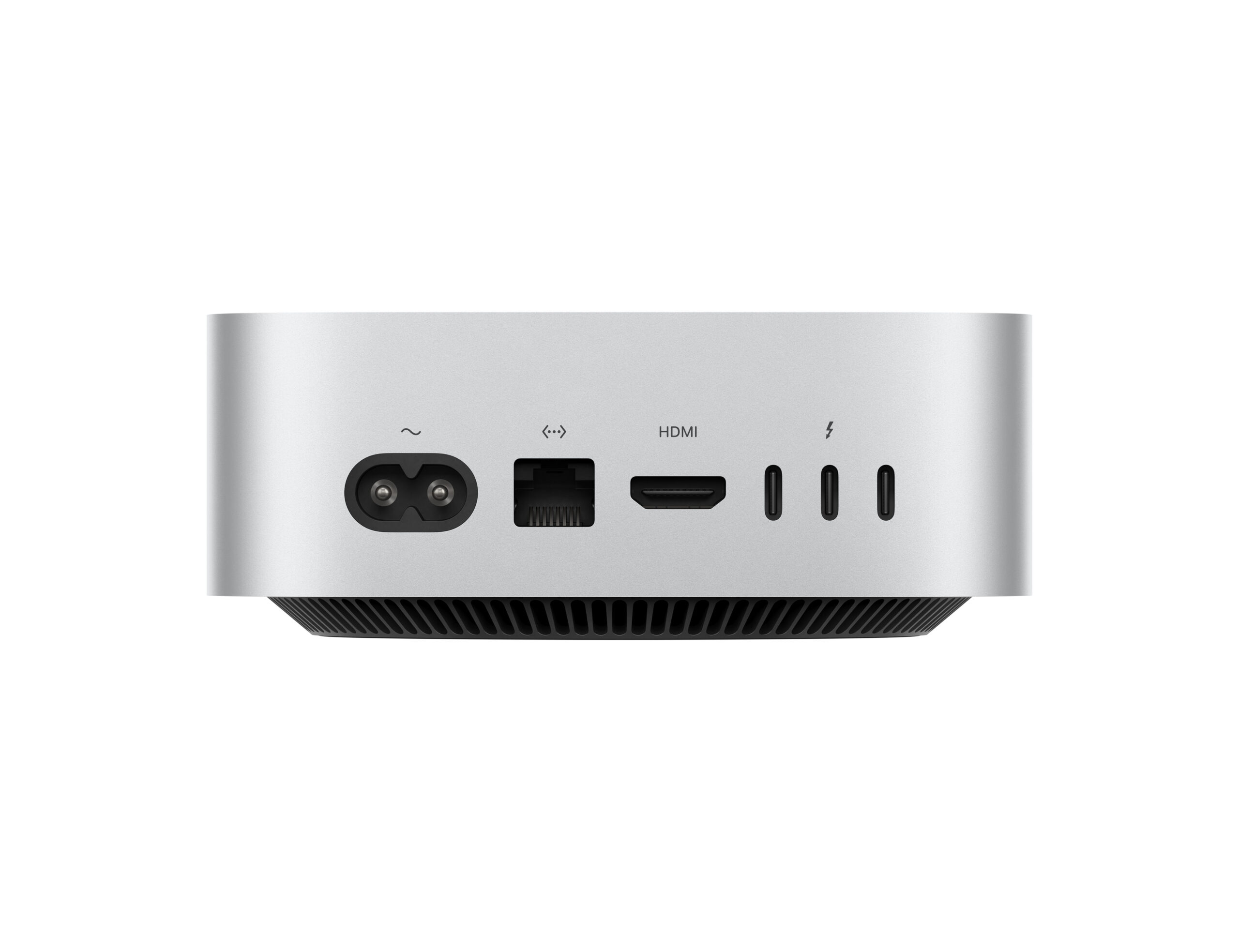
Image: Apple
Conclusion
It’s no secret that the Mac mini has been around for almost 20 years because its purpose in the market still remains successful to this day, particularly for first-time Mac buyers. Most people already own a display, keyboard, and mouse for their existing PCs, so for anyone who’s interested in switching from a PC to a Mac, the Mac mini’s relatively lower starting price point of $599 ($499 in education pricing), this makes the Mac mini the most affordable gateway into the Mac ecosystem. For those who just want a Mac, the Mac mini fits the bill terrifically for customers with their existing desktop accessories.
Thanks for tuning in, and follow us on X to get even more news and tidbits about Apple’s newest lineup of Macs!





